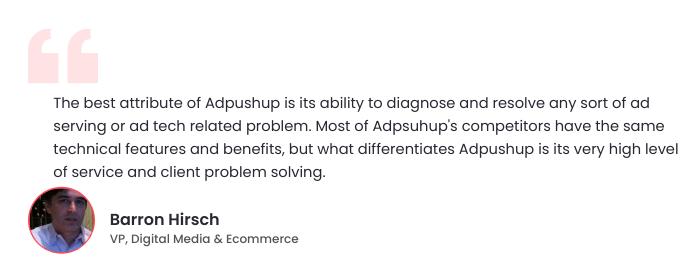Google, in November 2021, launched a Publisher Provided Identifiers which publishers will share with Google’s programmatic demand for better targeting, customised ads, and better advertising experience.
So unlike third-party cookies, PPIDs are the identifiers that publishers will assign the user based on first-party data.
This article will give a publisher’s to Google’s Publisher Provided Identifier. Let’s begin with understanding what PPIDs are and how the publishers use them.
What is Google’s Publisher Provided Identifier?
PPIDs are a unique identifier assigned by a publisher to a user, then passed into the Google Ad Manager 360. It’s a unique alphanumeric encrypted string representing the identifier’s data.
That being said, PPIDs are not the data; they are simply the identifiers of a user on the publisher’s website. When a user logs in to a publisher’s website, they can share the user’s PPID with GAM 360 as a means for Google to understand which ad requests are coming from the same user despite the cookies being restricted.
Simply put, the publisher can understand how many times the user has logged in and the type of content they are consuming. This information allows you to create customised ads for the user.
Publishers can set up PPIDs in the GAM 360, and in there, they can also create Audience Segments in the Audience Solutions.
How do PPIDs Work?
Let us take a look at the set-up of the PPID:
- The publisher creates a unique string of an identifier for a cross-device logged-in user. It’s hashed or encrypted in a way that it has no meaning to Google. For instance, 127KJSHK-JDH23NDNS901,JSO90978.
- Google then makes this unique string available to its programmatic partners by two methods:
3. You can batch upload the identifiers to audience segments; click here to know the process.
However, there are certain prerequisites you may need to fulfil:
- Work with your Google Account Manager, locate and submit the network code. You can find your network code in Ad Manager > Admin > Global Settings > Network Code
- Ensure that the first-party audience segment is active; the audience segment will allow you to associate the identifiers.
- The user must have access to functionality to opt-out of the personalised ads.
- If the user deletes their account, the publisher must immediately stop uploading the PPIDs associated with the user.
If the websites or apps don’t send ad requests associated with particular PPIDs, Google may remove those PPIDs after a short period of inactivity. The publishers may need to send requests again to make the PPID valid again.
Limits and Prerequisites
Google needs publishers to meet the following requirements to prevent PPIDs from being removed or ignored by the systems:
The PPID value should be:
- Alphanumeric
- A minimum of 32 characters and a maximum of 150 characters
- Encrypted or hashed
- When a user is identified for more than one session, the first-party cookie on multiple sessions can be used to generate a PPIDs.
- Publishers must not change the algorithms for changing a PPID as it may cause various features to be reset. These features include- frequency capping, audience segmentation, audience-based ad delivery, and sequential ad rotation.

What are the benefits of the PPIDs?
First-Party Data
Publishers set up these IDs and control them. PPIDs are based on first-party data; they are not affected by third-party cookies. PPIDs are utilised even when the third-party cookies are already restricted or disabled.
Frequency Capping
With PPIDs, a single user can be identified even if they log in from different devices, unlike the other identifiers. Furthermore, with PPIDs, GAM 360 will not ignore the frequency of logins from different devices, which will result in uninundated targeting. Hence, a better user experience. This means that the publishers can limit the ad views from a single user.
Cross-screen Identification
As I mentioned earlier, PPIDs can identify users logging in to websites over multiple devices are not limited to just one or two instances. As a result, the ad partners won’t show the same ad to the same user on different devices. Instead, PPIDs will identify the user and show personalised ads accordingly.
Audience Targeting
PPIDs are used to create personalised audience segments. The publishers’ CDPs or DMPs can use this stored data to create unique user profiles identifiable across cross-devices. And because the PPIDs are encrypted, the CDPs or DMPs won’t see the information.
How does PPID work for Programmatic demands?
Once the third-party cookies are unavailable, it gets difficult for the programmatic partners to identify what users are interested in. With PPIDs, the publishers retain ad performance and pass the data in the open auctions. With the help of PPIDs, the first-act data is accessible by the buyers on all publishers.
Summarising
In this ‘Publisher’s Guide to Publisher Provided Identifiers’, you may have understood that PPIDs allow publishers to enable multiple device frequency capping and create audience segmentation.
They also provide some level of protection against third-party cookies. However, it may not be possible for small publishers to collect enough data to create a PPID. For this, Google is figuring out a way to automate the functioning of PPIDs for small publishers.
FAQs
How do PPIDs help drive revenue?
It is interesting to know that Google has announced revenue gains of 15%. Once the publisher identifies the user, they can segment the users based on their content, first-party data, browsing behaviour, etc. The revenue gains most likely come from targeting audiences in the same way.
How to Set up the PPID?
- The publisher creates a unique ID for a user based on the first-party data (which the user gives voluntarily) or a log-in.
- The ID is then uploaded to the GAM 360, and publishers choose who they want to share the identifiers with.
- PPIDs are encrypted, so buyers cannot see the information. But they observe the ID in ad requests and figure out the personalised ads they need to show to users.
Does PPID work with multiple identifiers?
PPIDs supplement and do not replace other identifiers. For example, Google Ad Manager generates a PPID-enabled ad request that may also be a multiple identifier ad (cookies on websites, IDFA, or AdID). A multiple-identifier request will contain a PPID as the primary identifier and a secondary desktop/mobile identifier.

Shubham is a digital marketer with rich experience working in the advertisement technology industry. He has vast experience in the programmatic industry, driving business strategy and scaling functions including but not limited to growth and marketing, Operations, process optimization, and Sales.








